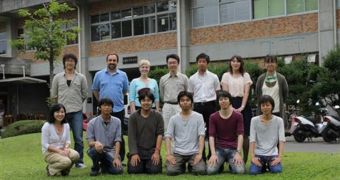A group of investigators based at the Lehigh University, in Pennsylvania, announces the development of a new mathematical model that explains an important aspect of cell motion. The dataset could also be used to learn more about how the human embryo develops, and how tissues heal.
The partial-differential equations that accompany the model explain the behavior of actin filaments, which are structures at the edge of cells that play an important role in cellular motions. Basically, cells cannot move without actin contracting and letting go alternatively.
Physicists at the university say that the new work could finally reveal more data about how cancer cells move through the body. Researching this in even greater detail could reveal additional insights into how cancers metastasize. Once this occurs, there is nothing doctors can do for patients.
According to the investigators, the alternate accumulation and dissipation of actin is the primary driver of a series of motions membranes perform as the cells crawl through tissues and the bloodstream.
The model was developed by Lehigh Department of Physics postdoctoral scientists Gillian L. Ryan, who worked closely together with associate professor of physics Dimitrios Vavylonis. The hypothesis the team made was that the entire actin assembly is an integrated part of an excitable system.
Details of the new research effort appear in a paper entitled “Excitable Actin Dynamics in Lamellipodial Protrusion and Retraction,” which is published in a recent issue of the esteemed Biophysical Journal.
“Once we had a clear quantitative analysis, this enabled us to formulate and test a coarse-grained mathematical model that attempts to capture the basic features of the system,” Ryan says of the challenges associated with creating the model.
The purpose of this entire line of work is to “better understand how actin filament assembly and disassembly generate cell patterns and mechanical forces,” Vavylonis goes on to explains.
In the future, experts may be able to use the new research in order to develop advanced drugs for combating the spread of cancer, or for restoring immune system cell motions hampered by viral infections.

 14 DAY TRIAL //
14 DAY TRIAL //